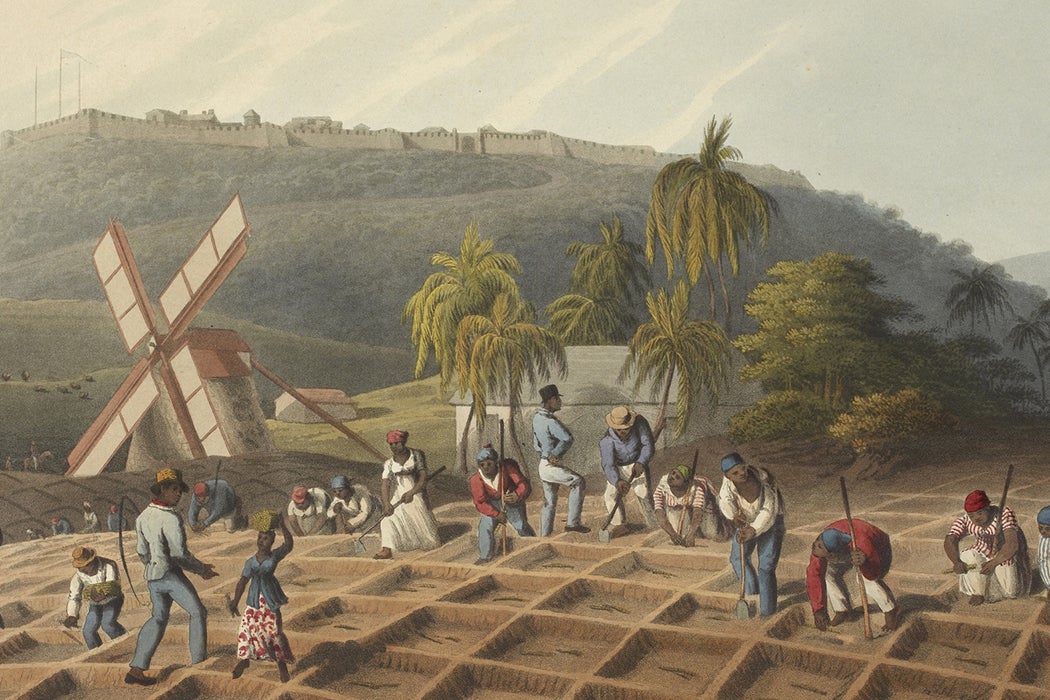The British Empire outlawed slavery in August 1833, some three decades before Lincoln’s Emancipation Proclamation.
Popular history views abolition as a result of grand debates over human rights, a courageous activist movement, and fear over slave rebellions in the West Indian colonies. Perhaps, some theorize, Britain had a more sophisticated view of liberty than their still-slaveholding American cousins.
Audio brought to you by curio.io
But historians Trevor Burnard and Richard Follett see another contributing factor: venereal disease. They argue that an important contributing factor to abolishing slavery in the West Indies was actually the image of the West Indian colonial plantation owner devolving from a celebrated part of the Empire’s economic engine to a low-life, oversexed exploiter, anathema to British values.
The early colonial era celebrated the “loveable rake.” British culture’s masculine ideal was the imperial adventurer who took over foreign lands and, in the process, engaged in promiscuous sex. In British society, sex with servant women was celebrated as a sign of virility, a value that transferred to the slave-holding colonies.
By the 1780s, that ideal began to change, as more egalitarian views emerged. The proper British gentleman was a family man, wedded to one woman, leaving church with numerous children in tow. Recreational sex was frowned upon. The public image of plantation owners changed as the British concept of sexuality was transformed.
The Caribbean plantation owners began to be seen in a more negative light, as the “fast-living, sallow-faced, gluttonous” beneficiaries of slavery, write Burnard and Follett. The image was not far from the reality. Thomas Thistlewood, a planter in Jamaica, left his journal for posterity. Among the colony’s elite, he recorded his observations from 1750 until his death in 1786. He recorded sexual intercourse with 138 women, almost all of them slaves. Thistlewood recounted his own struggles with venereal disease, including issues with mercury poisoning resulting from the standard Western medical treatment of the day.
Want more stories like this one?
The spread of venereal disease in the West Indian colonies, affecting both slaveholders and their African slaves, was employed by abolitionists as “evidence of British slaveholding licentiousness in the tropics,” according to Burnard and Follett.
In early nineteenth century Britain, a growing number of popular beliefs weakened the cultural acceptance of slavery. Tropical weather itself was seen as an inducement to immoral sexual behavior. Additionally, it was an era when the growth of the white population in both northern Europe and North America was celebrated as a grand advance in civilization. By contrast, in the West Indian British colonies, there was a dearth of white babies. White males outnumbered white females by a two-to-one ratio. The population was increasingly mixed-race.
This emerging mixed-race class emerging from the Caribbean was looked upon in horror by some abolitionists, seen, according to Burnard and Follett, as “a walking, disease-ridden reminder of the danger of race mixing and the malign impact of the colonial ‘other’ on a robust British public.”
By 1833, after decades of debate, those arguments prevailed as the Empire abolished slavery. Though abolition is now understood to have advanced human rights, it turns out the abolitionists sometimes embraced arguments that to modern ears sound puritanical and racist.







